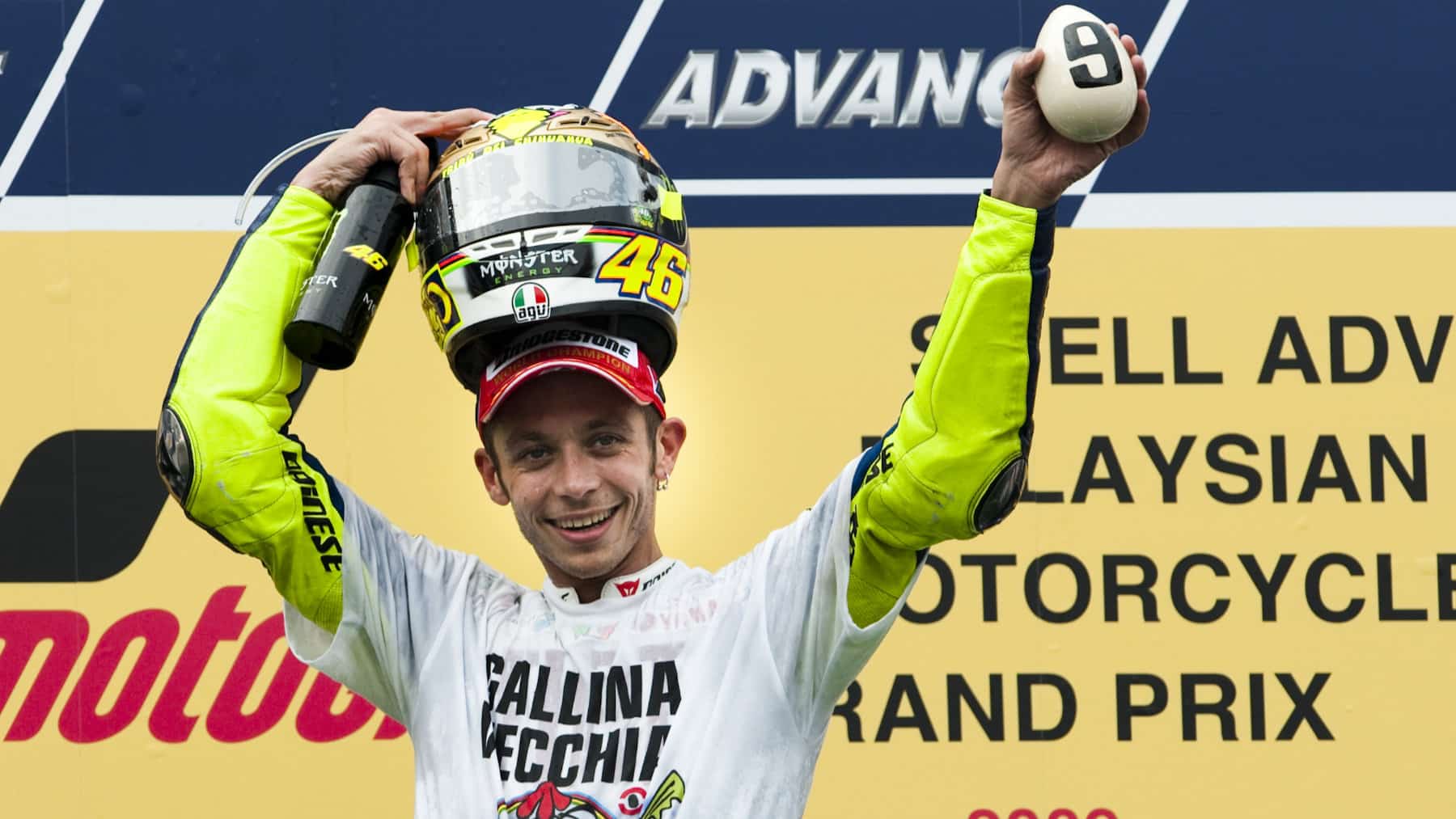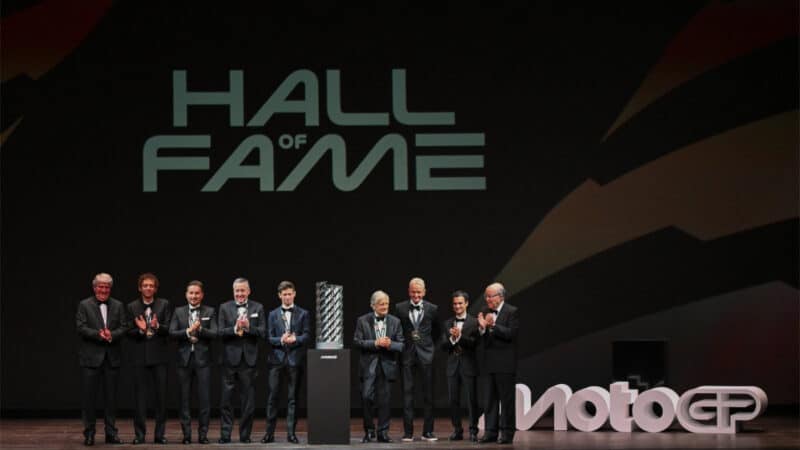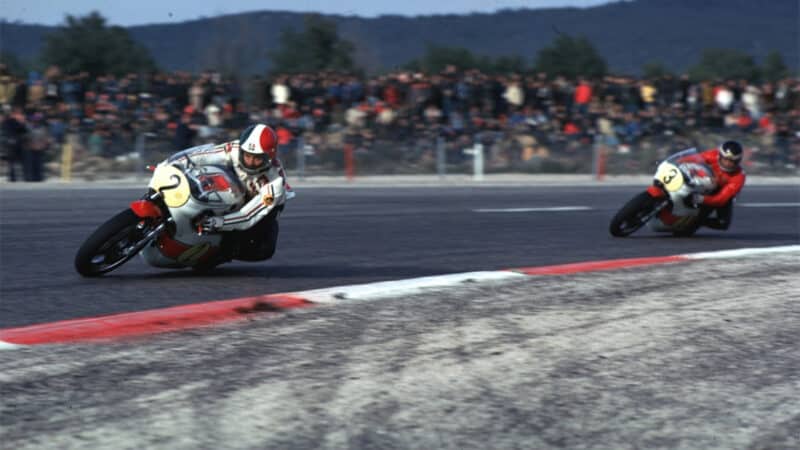To answer the question in the headline, Valentino Rossi is both, of course. He won seven MotoGP championships, one 250cc title and a 125cc crown.
Why the question? MotoGP rights holders Dorna, now owned by Liberty Media, is once again pushing to further the gap between motorcycle racing’s premier class and its intermediate and junior grand prix categories to focus more attention on the big class. One-class-to-rule-them-all.
This follows the example of car racing, where Formula 1 hogs all the limelight, while the F2 and F3 classes exist in the shadows, only noticed by the cognoscenti.
The idea is to simplify things and thereby, hopefully, attract more fans. Dorna wants one standout class, so people aren’t wondering who’s the world’s top motorcycle racer. This is the same reason it’s kept World Superbike down over the past decade or so. Dorna wants the world to know which is the top class, because confusion doesn’t turn people on.
The process of streamlining grand prix racing isn’t a new thing – it’s been happening for more than 40 years.
In 1982 there were six GP classes: 80cc, 125cc, 250cc, 350cc, 500cc and sidecars. The 350s were axed at the end of that year, the 80s followed seven years later and the sidecars went at the end of 1996, leaving the three classes that are the basis of what we know today.
Since then, step by step, the spotlight has been turned away from the lower categories, which now exist purely to be steps on the ladder to the top rung. Why else would Dorna have introduced a maximum age limit in Moto3? Because it doesn’t want riders spending their entire careers in the smaller classes and perhaps distracting fans from the main event.
The concept of the 125/Moto3 and 250/Moto2 categories as feeder classes is nothing new. Here’s something I wrote at the end of 2011, when the 125cc championship was replaced by Moto3…
“During the last 20 or so years of its 63-year existence, the 125 class was little more than a feeder class, preparing young talent for 250s and then 500s and more recently for Moto2 and then MotoGP.”
FIM president Jorge Viegas, Rossi, Lorenzo, Spencer, Stoner, Agostini, Schwantz, Pedrosa and Dorna CEO Carmelo Ezpeleta at the Hall of Fame launch
Dorna
Things were different before the 1990s, when the smaller classes sometimes attracted as much attention as the premier class. This was especially true during MV Agusta‘s domination of 500cc GPs during the 1960s and early 1970s, when it made the racing so predictable that fans were more excited by the 250 class, which featured more exciting machines and more exciting racing.
Depending on the country, of course.
Back in the 1970s, American racer/journalist Dennis Noyes made Spain his home and well remembers an exchange with British journalist Chris Carter, with whom he wanted to trade information.
“I would tell Chris the news from Angel Nieto and Victor Palomo [another of Spain’s early greats] if he would help me out with Phil Read and Barry Sheene,” Noyes recalls. “Chris laughed and replied, ‘I’ll agree to a better trade: if you promise to tell me nothing of your Spaniards, I will supply you with some snippets from the garages of Messieurs Sheene and Read.’”
Carter was only half joking.
Britain and the USA have always been more excited by the bigger classes, whereas Spain, Italy and other nations have a particular fondness for the smaller categories. Now the Spanish owners of MotoGP are owned by Americans, so…
I agree that MotoGP should be put on a pedestal at the top of the pyramid, because it is the pinnacle of motorcycle racing, but I don’t think the other classes should be diminished. And I do think it’s possible to do one without the other – in other words, you can attract new fans by shining a light on the glitter and glamour of MotoGP, without pissing off the true fans.
I certainly agree that premier-class victories and world titles count for more than success in the smaller categories, because no way does a Moto3 victory or title mean as much as such successes in MotoGP.
This debate will soon be a huge talking point, because the next time Marc Márquez wins a grand prix it will be his 100th victory across all classes.
Dorna is hoping Márquez’s 100th comes in this Sunday’s Japanese GP which will win him his ninth – sorry! – seventh world championship, so that his title celebration overshadows his centenary.
One hundred GP victories is obviously a very big deal. However, my own judgement of the greats focuses on the premier-class. Therefore I judge the MotoGP top three (Rossi on 89 wins, Márquez on 73, Giacomo Agostini on 68) to be more significant than the all-classes top three (Ago on 122, Rossi on 115, Márquez on 99).
The same goes for championships. How can it be any other way?
Agostini (left) on his way to his 15th world championship and his eighth premier-class title in 1975
Yamaha
Full respect to Nieto (90 x 50cc, 80cc and 125cc wins), Toni Mang (42 x 125, 250 and 350 wins), Carlo Ubbiali (39 x 125 and 250 wins) and all the other lower-classes heroes, but riders who have conquered the biggest class stand above them.
No one put this better than Mick Doohan, winner of 54 MotoGP races and five MotoGP titles in the 1990s. When Rossi equalled the Aussie’s total of 54 victories at the 2003 Czech GP (adding his 28th MotoGP success to his 16 125 and 250 wins), an Italian journalist made the mistake of asking Doohan what he thought about Rossi equalling his victory total.
“In F1, they don’t count F3000 [the forerunner of F2] and F3,” Doohan hissed.
Dorna has been creating MotoGP Legends for decades, celebrating the championship’s greatest riders – across all categories – by creating an official pantheon just for them. The new Hall of Fame is a kind of roped-off VIP area within the legends’ pantheon, for the super-high achievers, only from the premier class.



